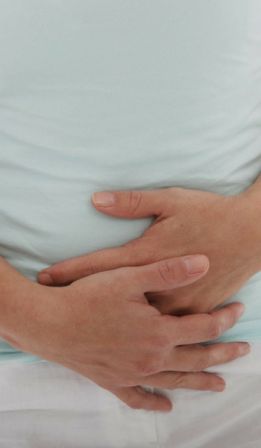Pelvic Organ Prolapse
Urinary bladder is situated in the pelvis between the pelvic bones. When the muscles that support the pelvic region are strained, in cases such as, during vaginal childbirth or chronic constipation, then it may result in anterior prolapse. What is it? An anterior prolapse also called bladder prolapse or cystocele is a condition where the bladder is herniated into the vagina making it appear like a bulge. This occurs when the supportive tissues of the vagina become frail and stretched.
Causes of anterior prolapse
The muscles, ligaments and connective tissues in the pelvic floor holds up the bladder and other pelvic organs. Any damage to these muscles or ligaments present between the pelvic floor and bladder may weaken and stretch the bladder and vaginal walls which ultimately nudges the displacement of the bladder into the vagina. Below are certain factors that may weaken the pelvic muscles:
- Pregnancy and vaginal delivery
- Overweight or obesity
- Heavy lifting of the object
- Repetitive straining during bowel movements
- Inappropriate gym exercises
- Chronic or violent coughing

Symptoms
The symptoms of moderate to severe anterior prolapse would include:
- Sensation of fullness or pain in the pelvic region
- Feeling of incomplete urination
- Increased frequency and urge to urination
- Recurrent urinary tract infections
- Protrusion of vagina and bladder through the vaginal opening
Diagnosis
A physical examination and certain laboratory tests are absolutely necessary. These examination would allow the doctor to grade the prolapse and ascertain the pelvic floor muscles. The doctor may heavily recommend bladder and pelvic ultrasound to rule the presence of any masses applying pressure on the bladder and also evaluate the muscle function. Urinalysis may be proposed to look for any symptoms of infection in the bladder. Ultrasound of the pelvis. Imaging tests. Blood tests.
Treatment options
In cases of asymptomatic bladder prolapse, treatment is not necessary. However, implementing certain lifestyle modifications could pave the way in preventing or worsening the condition. In moderate anterior prolapse, the following therapies are highly recommendable.
- Vaginal pessaries : A vaginal pessary is a plastic ring that should be inserted into the vagina to support the vaginal wall and holds the bladder.
- Estrogen therapy : Your doctor might suggest estrogen therapy which keeps the pelvic floor muscles strong and healthy by preventing further prolapse.
Risk factors
Some of the adverse factors which might increase the risk of developing anterior prolapse or cystocele are:
- Age :The risk of anterior prolapse magnifies with your age. Mostly, the risk level increases after menopause, when there is a decreased production of estrogen.
- Surgical procedure : surgical techniques such as hysterectomy might weaken the pelvic floor muscles in leading the bladder to prolapse into the vagina.
- Increased intra-abdominal pressure :Chronic lung disease, straining with chronic constipation, incessant cough caused by smoking, and repeated heavy lifting might increase the pressure in the abdomen, which would be resulted in weakening pelvic floor muscles.
- Obesity :Overweight or obesity might increase your risk of anterior prolapse.
Prevention and Self-management
Refraining from lifting heavy objects. Performing regular exercise such as walking, swimming or bike riding, instead of running, jumping or high-impact aerobics. Increasing the amount of fiber consumption and water intake to prevent constipation. Practicing pelvic floor exercises to strengthen the muscles that support the organs in the pelvic cavity. Managing the weight in a healthy range because obesity may worsen the condition.
Dealing with urinary incontinence during the prolapse
If the anterior prolapse or cystocele is associated with urinary incontinence, your doctor may recommend a procedure that supports the urethra and resolving the incontinence symptoms.
